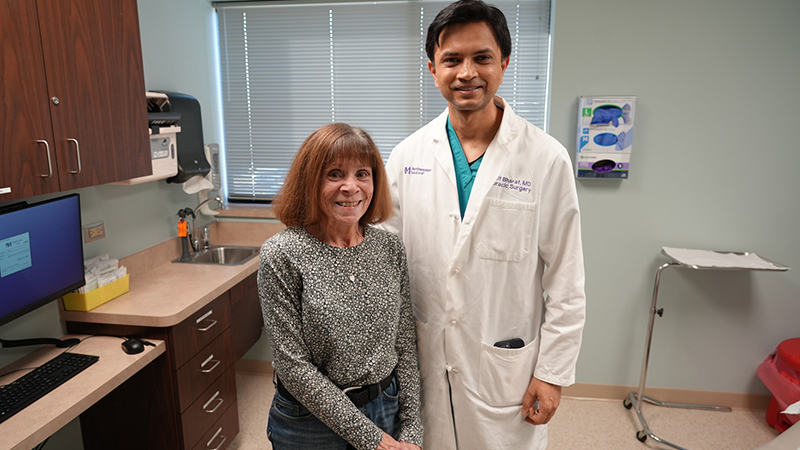A Breakthrough Birth Control Gets Better
Published May 2021
Intravaginal Ring Enhances Drug Delivery
This article was originally published in the Northwestern University Feinberg School of Medicine News Center.
A groundbreaking intravaginal ring developed by Northwestern Medicine biomedical engineer Patrick Kiser, PhD, protects women not only against HIV, but also sexually transmitted disease and unplanned pregnancy. Now, he and his team have designed a new model of the ring that better controls the rate of drug release, enabling the delivery of a more diverse array of drugs for extended durations.
In previous versions of the device, drugs are released into the body directly through the ring, which is made of a soluble polymer. This works well for some drugs, but only those with chemical properties and molecular weights that can be diffused through the material. In the new design, drugs are compressed into tiny pellets that are placed into a hollow tube inside the ring. The properties of the pellets control the rate in which the drugs are released.
“By controlling the rate that fluid can get into the pellets, we control how fast the pellets swell and how fast the drug is released from the pellets,” said Kiser, who is an associate professor of Obstetrics and Gynecology in the Division of Reproductive Biology and of Biomedical Engineering at the McCormick School of Engineering. “This new ring opens up the ability to deliver a wide variety of drugs in a controlled way over a month of time without having to worry about the role of the polymer in the drug’s release.”
The novel drug release mechanism can deliver multiple drugs with distinct chemical properties and dosing requirements simultaneously, a feature that may prove crucial as scientists and clinicians seek to optimize the potency of antiretroviral drugs and increase patient commitment to them.
“All of the systems we’ve developed now allow us to deliver a wider and wider variety of molecules for women’s health applications,” Kiser said. “Now we have to figure out the best way to move forward with these ring configurations.”





